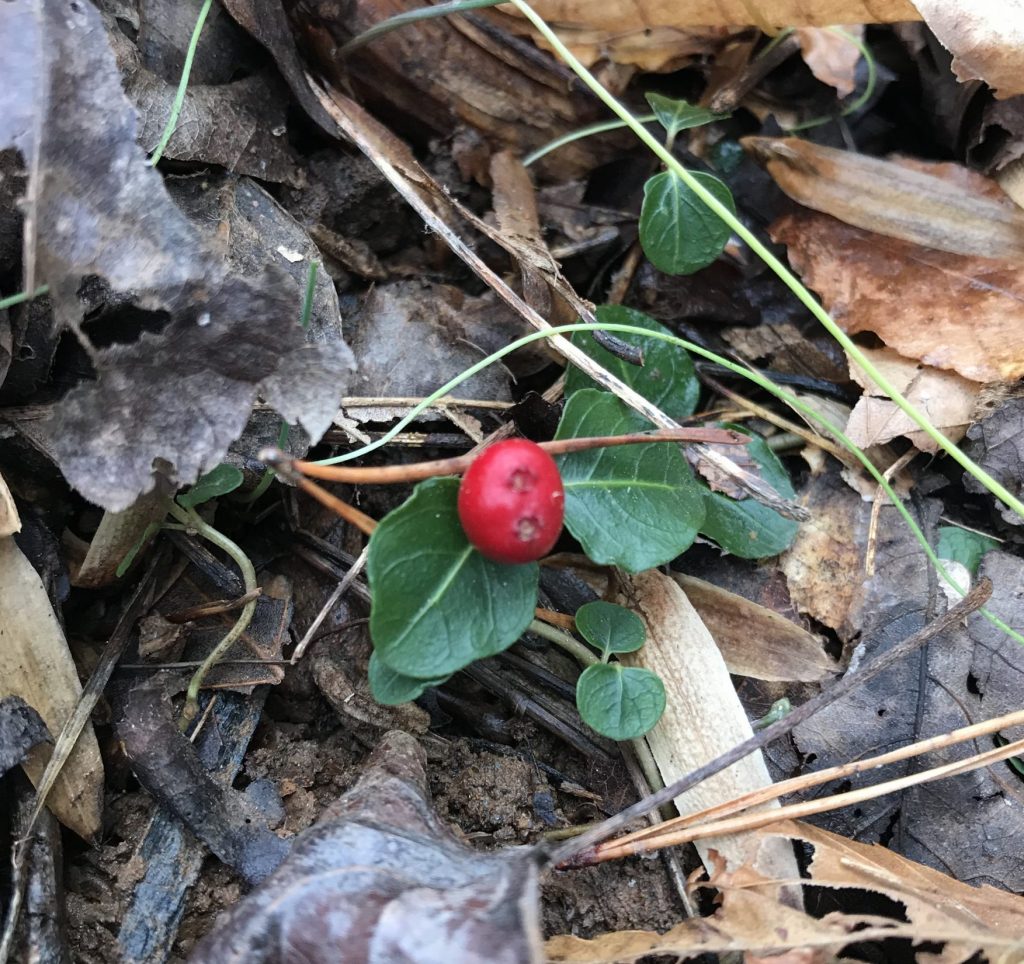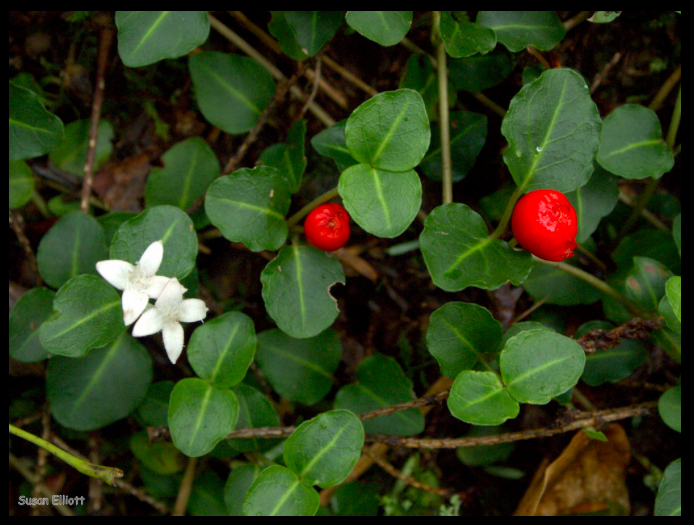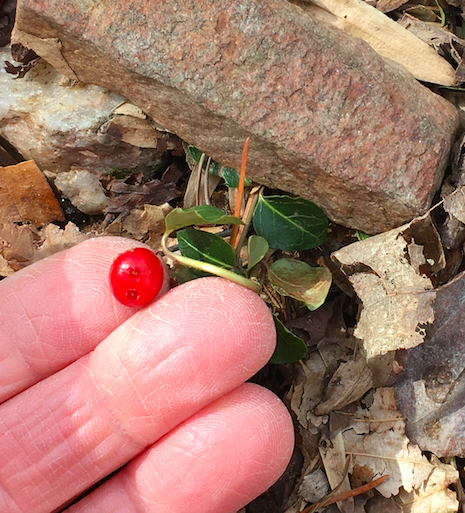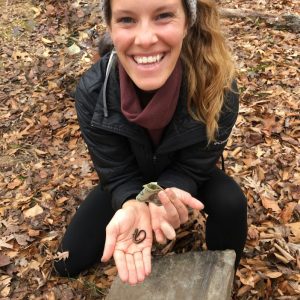
As Valentine’s Day has come and gone, I hope nobody is sick of the color red, as that is one of the best ways to identify our next winter spotlight species for #sciencesaturday! Partidgeberry (Mitchella repens) might be hiding under the all the brown leaves on the forest floor, but this vibrant green leaf with a crimson fruit, is another evergreen plant that is easiest to spot during winter. A woodland creeper that grows about 2 inches high, you’ll have to look low along the ground to find it.

The telltale bright red berry with two spots gave it away. That is also the inspiration behind one of partridgeberry’s nicknames, “Twinflower”, because it produces white-pink flowers in pairs, and then if both flowers are pollinated, the ovaries of these flowers merge. The two marks, that look like eyeballs, are actually scars from this process. The resulting berry contains 8 seeds, and although edible for people (but not very sweet), it is a much better food source for the local birds, foxes, mice, and skunks.

I was able to find it along Dawson’s Trail (red berry on the red trail)! If you successfully ‘spot’ it, hopefully you’ve learned some new tips on how to remember this name or nickname! And don’t forget to add any pictures you take of it to our iNaturalist project.

Ms. Conway,
Fascinating plant!
Glad to learn of it so I can look for it. Might it be found on Fairfax County park property?
Is it a good option as ground cover in residential yards?
Thank you!
Hi Deborah,
Thanks for reading about this fun plant! It is definitely found along Fairfax County, as it grows all over eastern North America (even into Canada!). It makes a great ground cover for shady areas, however, white tailed deer love to eat it, so it might encourage the deer that live nearby to visit your yard more often in summer and fall.
Comments are closed.